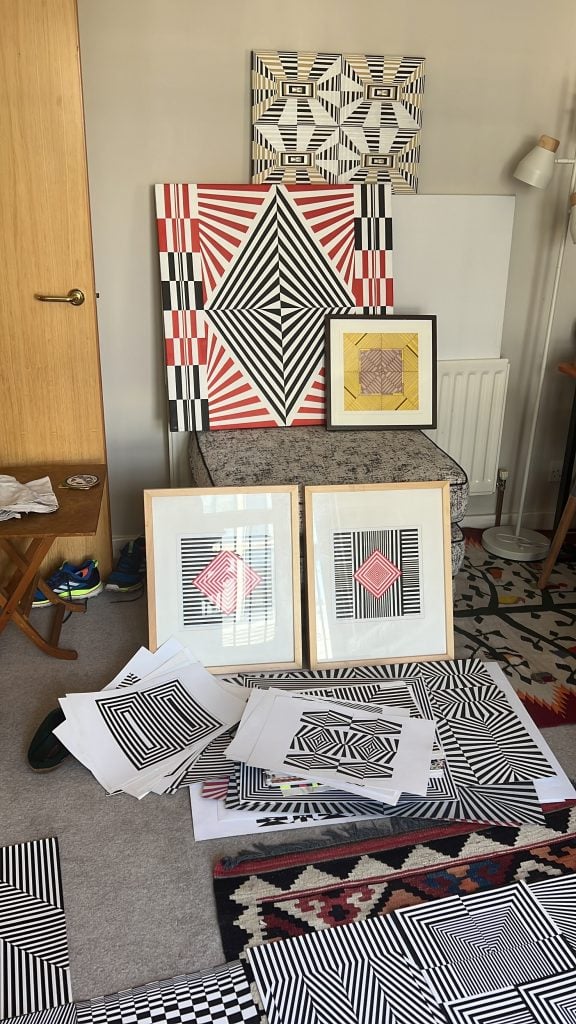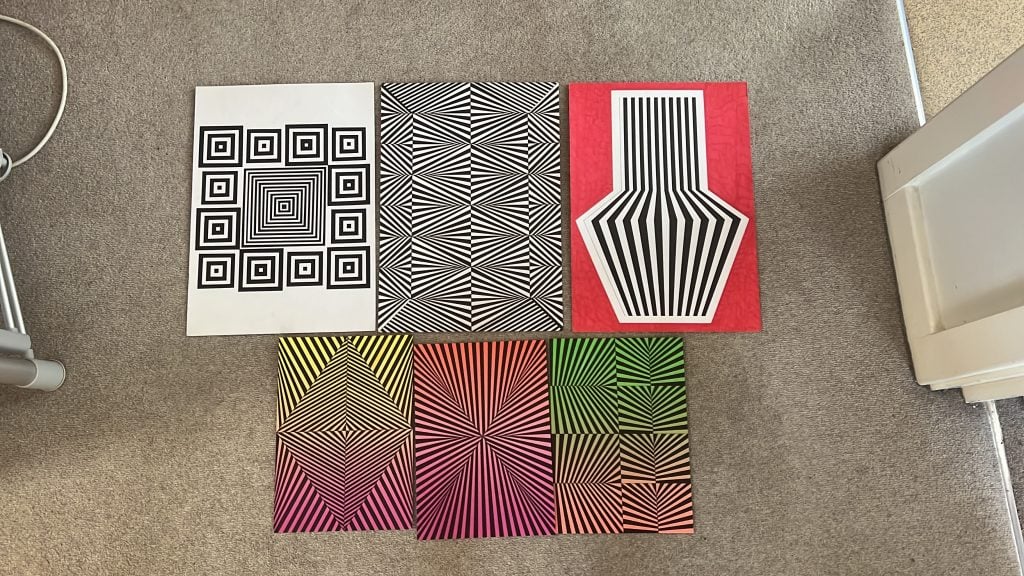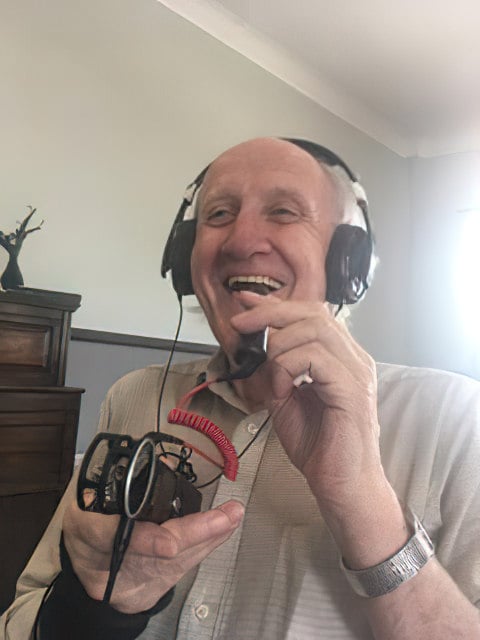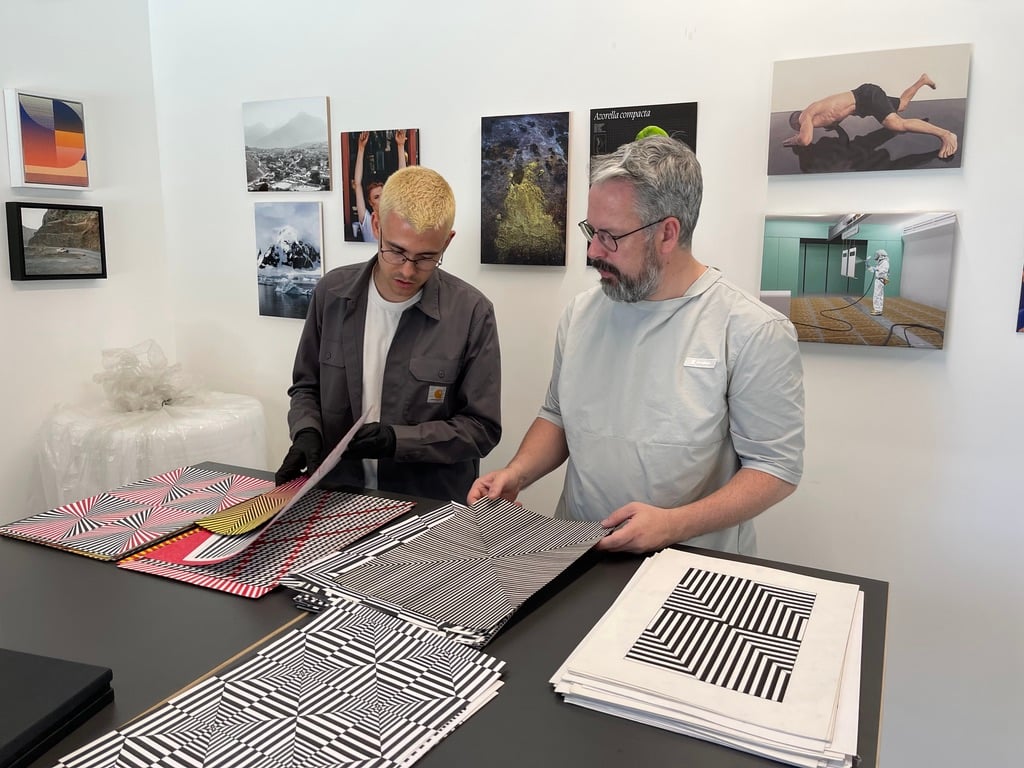Art World
A London Artist Saved a Trove of His Late Neighbor’s Op-Art Drawings From the Trash. Then, They Went Viral
London artist Alan Warburton rescued the artwork of his upstairs neighbor George Westren.

London artist Alan Warburton rescued the artwork of his upstairs neighbor George Westren.

Vittoria Benzine

London-based digital artist Alan Warburton went viral last week—though not for his own work.
When crews came to clean out the apartment of his deceased upstairs neighbor, George Westren, Warburton rescued 200 drawings the man had made over 20 years before they were scrapped. Then, Warburton shared them on Twitter, where they instantly struck a chord.
Interactions accumulated in the hundreds of thousands. Westren’s old friends shared memories, others inquired about buying the work. Now, Warburton is orchestrating an exhibition of Westren’s work and overseeing a print sale to fund its preservation and archiving. In the meantime, Warburton has been working with Westren’s longtime art teacher, Kim Noble, to get in touch with the late artist’s loved ones, to whom the work should belong. They’re still waiting to hear back.

Untitled Op Art drawings in felt tip pen by George Westren. Photo by Alan Warburton.
After bringing Westren’s work to safety, Warburton dusted the works off and cracked open the portfolios. He’d seen a bit of his quiet neighbor’s work online, but it was an entirely new experience viewing it in person.
“I started laying them out and I was dumbfounded,” Warburton told Artnet News. He tweeted the images for the benefit of his art friends.
Westren’s complex Op Art drawings hailed from simple means. “They’re felt tip pens, for God’s sake,” Warburton said. The late, soft spoken artist dealt with addiction, anxiety, and homelessness. Art was his outlet—each numbered drawing illustrates healing through technical development.
In the Twitter thread, Warburton wrote that Westren “started working in color once he got sober.”
According to the artworks’ dates, Westren cranked out a drawing every other week. “If you make a mistake, you have to start again,” Warburton said of creating these dimensional illusions. “George did not make mistakes. To begin with, he did. But after a while, he did not make mistakes.”
“He starts with this tunnel,” Warburton continued. “Then it starts fragmenting and doing interesting things. You can see both a formal and a technical improvement in the works.”

George Westren. Photo courtesy of Kim Noble.
It’s an age-old story: The artist must leave the world in order to be loved by it. “This tapped into something fairly primal that pre-exists me, this idea that you have to die to get acclaim,” Warburton said. “It makes you think about value.”
Warburton found Westren’s work during an impasse in his own practice. “I was primed for this to happen in many ways,” he said.

Warburton (right) sorting through copies of Westren’s work. Photo courtesy of Warburton.
“I realized that I’ve essentially come to the end of a chapter,” Warburton said. Since January he’s focused on making music, writing songs about life, death, and rebirth. “It’s so weird that I’ve ended up shepherding George’s story into the world because it is a story that means a lot to me at the moment.”
Commandeering Westren’s work has ended the anonymous era in Warburton’s own multidisciplinary career. “I’m glad that the habit of a lifetime has been broken for somebody who might have been forgotten forever,” he said.